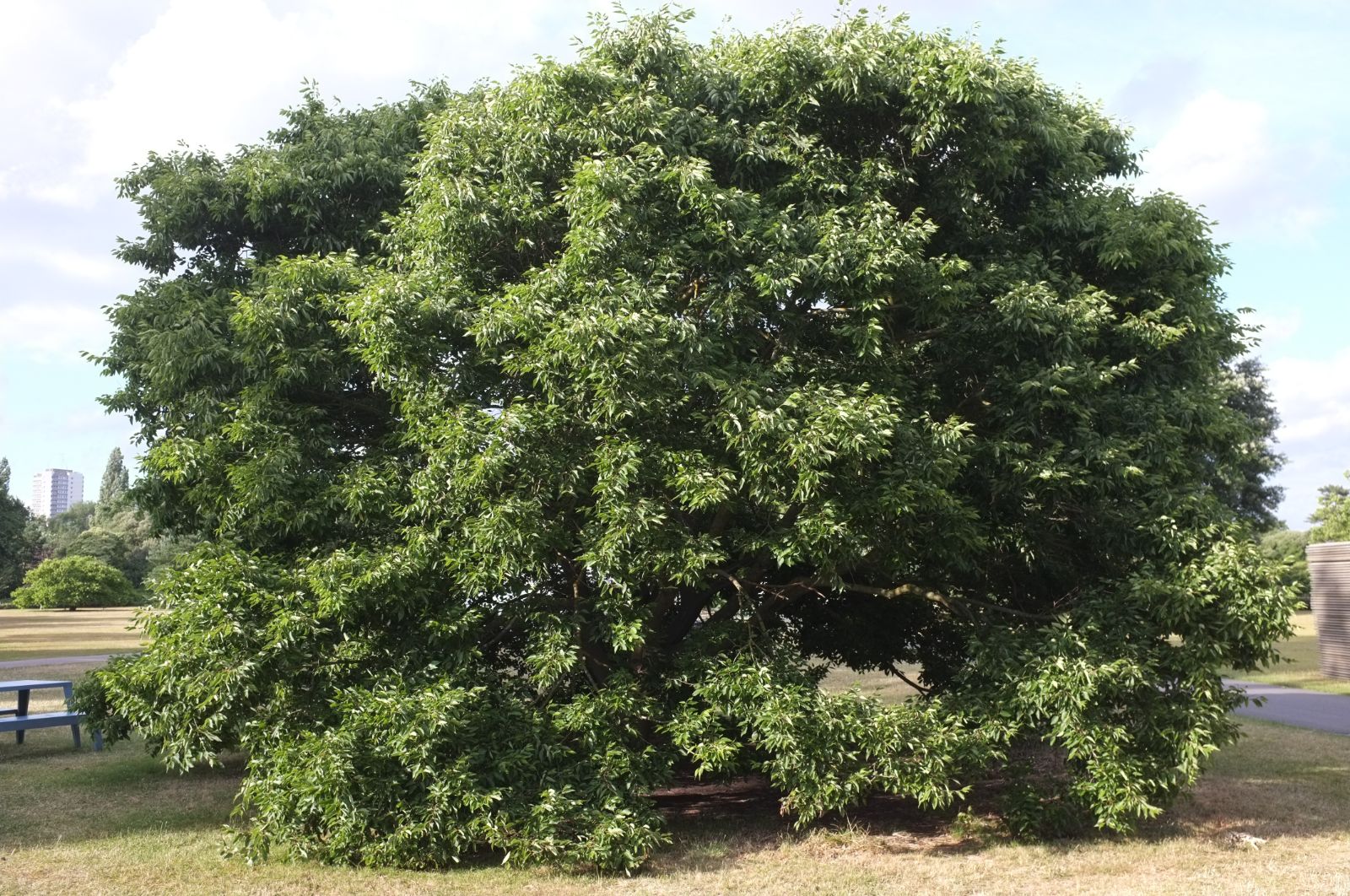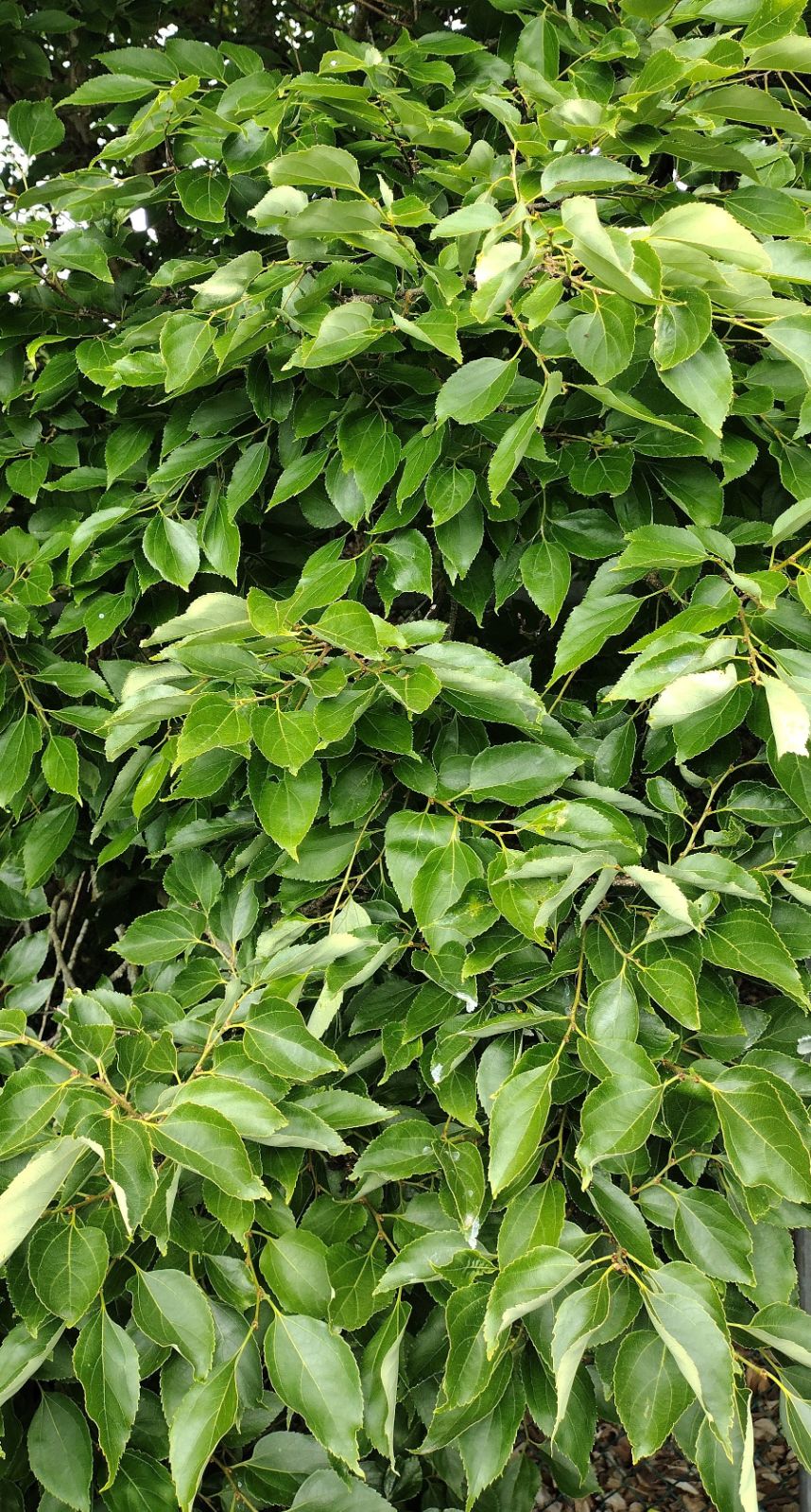Celtis choseniana
Credits
Article from New Trees by John Grimshaw & Ross Bayton
Recommended citation
'Celtis choseniana' from the website Trees and Shrubs Online (treesandshrubsonline.
Genus
Large shrub or tree to 25 m, dbh 40 cm; main trunk typically branching close to ground level, forming a wide, open crown. First-year branchlets slightly pubescent, green, with prominent lenticels; at maturity, bark smooth, reddish brown; nodes prominent. Stipules absent. Leaves deciduous, 4.5–12 × 3.5–7.5 cm, narrow or broadly ovate, papery, upper surface glabrous, lower surface with some pubescence restricted to the veins, two (to three) secondary veins on each side of the midvein, margins serrate for three-quarters to half of their length, apex caudate, young growth slightly pink; petiole furrowed, yellowish green, somewhat pubescent. Infructescences unbranched, 2–3 cm long. Fruit solitary, black, 1 cm. Lee 2002. Distribution NORTH KOREA; SOUTH KOREA. Habitat Wooded slopes on sandy loam soils; only recorded between 30 and 35 m asl, though probably occurs higher. USDA Hardiness Zone 5–6. Conservation status Not evaluated. Taxonomic note This species is rather poorly known and may be conspecific with C. sinensis or C. edulis. Lee (2002) recognises C. choseniana as a Korean endemic.
Celtis choseniana is one member of the genus that has achieved a warm reception, being highly praised by Douglas Justice for the winter pattern of its ‘horizontally layered, fan-like branches’ with zigzag shoots (Wharton et al. 2005). The specimens he describes in Vancouver were grown from wild seed collected in 1984 from parents 12 m tall, and are now nice rounded trees, likely to attain the same height. On Ullung-do individuals have been found up to 25 m tall, and seed from these was collected by the Kirkham, Flanagan and Boyce Expedition to Korea (KFBX 170) in 1989 (Flanagan & Kirkham 2005). Unlike the Vancouver trees, a seedling from this collection has not performed well at Kew, being an unhappy-looking 4 m and suffering badly from insect predation in June 2006. Neither has it done particularly well at the Morton Arboretum where, although 6 m tall from a 1986 accession, it suffers from canker after pruning (K. Kim, pers. comm. 2006). The autumn colour has been described by Kunso Kim as an ‘unremarkable yellowish’, and by Justice as ‘poor’ (Wharton et al. 2005).


